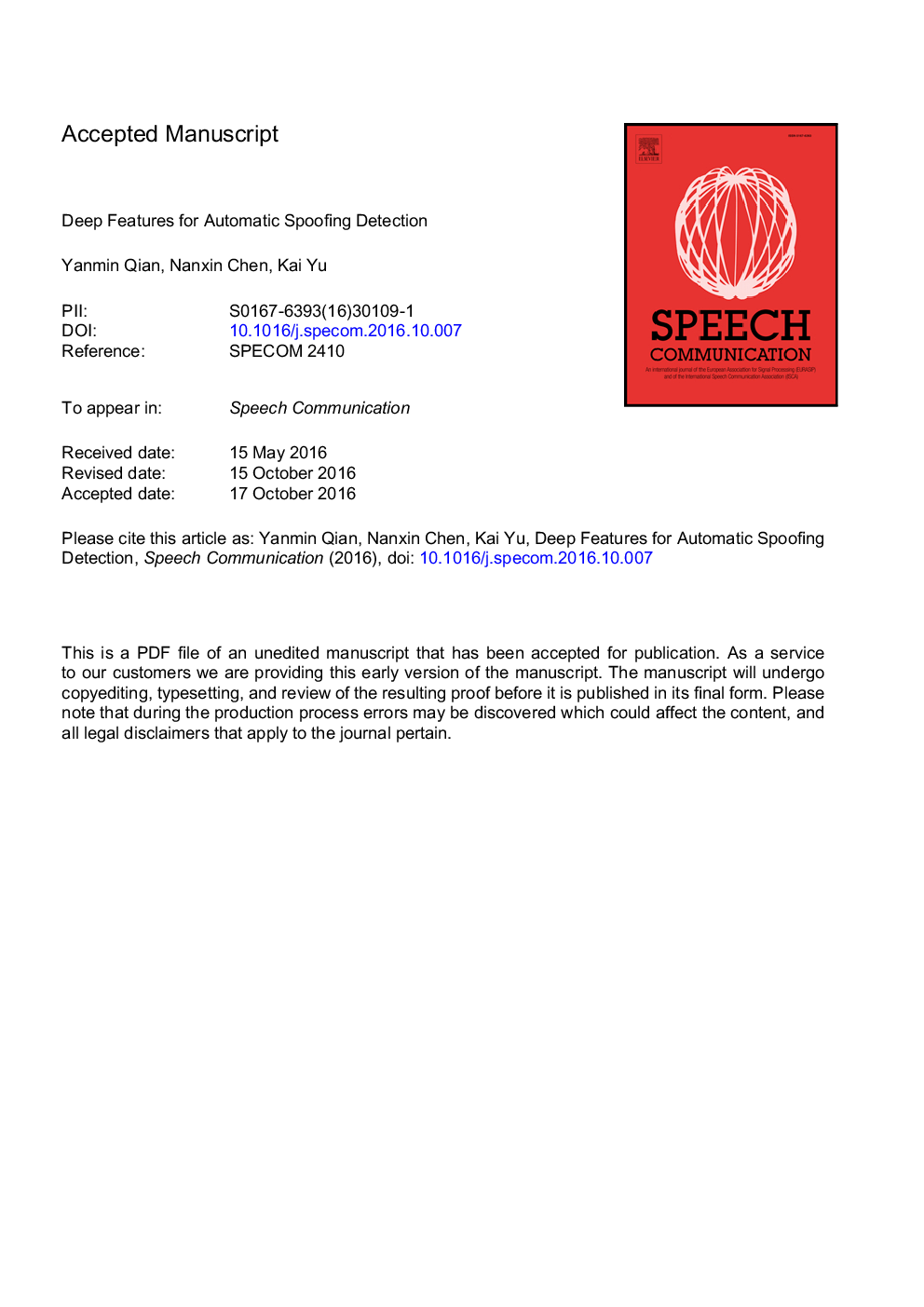| کد مقاله | کد نشریه | سال انتشار | مقاله انگلیسی | نسخه تمام متن |
|---|---|---|---|---|
| 4977860 | 1452015 | 2016 | 12 صفحه PDF | دانلود رایگان |
عنوان انگلیسی مقاله ISI
Deep features for automatic spoofing detection
ترجمه فارسی عنوان
ویژگی های عمیق برای تشخیص جعلی خودکار
دانلود مقاله + سفارش ترجمه
دانلود مقاله ISI انگلیسی
رایگان برای ایرانیان
کلمات کلیدی
تشخیص خودکار جعلی، ویژگی های عمیق، شبکه عصبی عمیق شبکه عصبی مکرر،
موضوعات مرتبط
مهندسی و علوم پایه
مهندسی کامپیوتر
پردازش سیگنال
چکیده انگلیسی
Recently biometric authentication has made progress in areas, such as speaker verification. However, some evidence shows that the technology is susceptible to malicious spoofing attacks, and thus dedicated countermeasures are needed to detect a variety of specific attack types. Inspired by the great success of deep learning in automatic speech recognition, we propose a detailed deep learning based feature engineering framework for spoofing detection in this paper. To incorporate deep learning into spoofing detection, this work proposes novel approaches for extracting and using features from deep learning models. In contrast to the traditional short-term spectral features, such as MFCC or PLP, outputs from the hidden layer of various deep models are employed as deep features for spoofing detection. Two frameworks are developed to extract deep features, including DNN-based frame-level feature extraction and RNN-based sequence-level feature extraction, and several structures are explored within each framework. Once the deep features are extracted, they can be used as a spoofing identity representation for each utterance, and the appropriate back-end classifier is then applied to make the final detection decision. These approaches were evaluated on the ASVspoof2015 Challenge data corpus. Experiments show that deep feature based systems achieve good performance, even without using any designed features such as phase and cochlea features common in spoofing detection, and obtain significant performance improvements compared to the traditional baselines. The EER of the best deep feature system achieves nearly 0.0% for all attack types from S1 to S9, and gets 1.1% on all averaged conditions (plus S10), which is very promising performance in ASVspoof2015 Challenge task.
ناشر
Database: Elsevier - ScienceDirect (ساینس دایرکت)
Journal: Speech Communication - Volume 85, December 2016, Pages 43-52
Journal: Speech Communication - Volume 85, December 2016, Pages 43-52
نویسندگان
Yanmin Qian, Nanxin Chen, Kai Yu,
